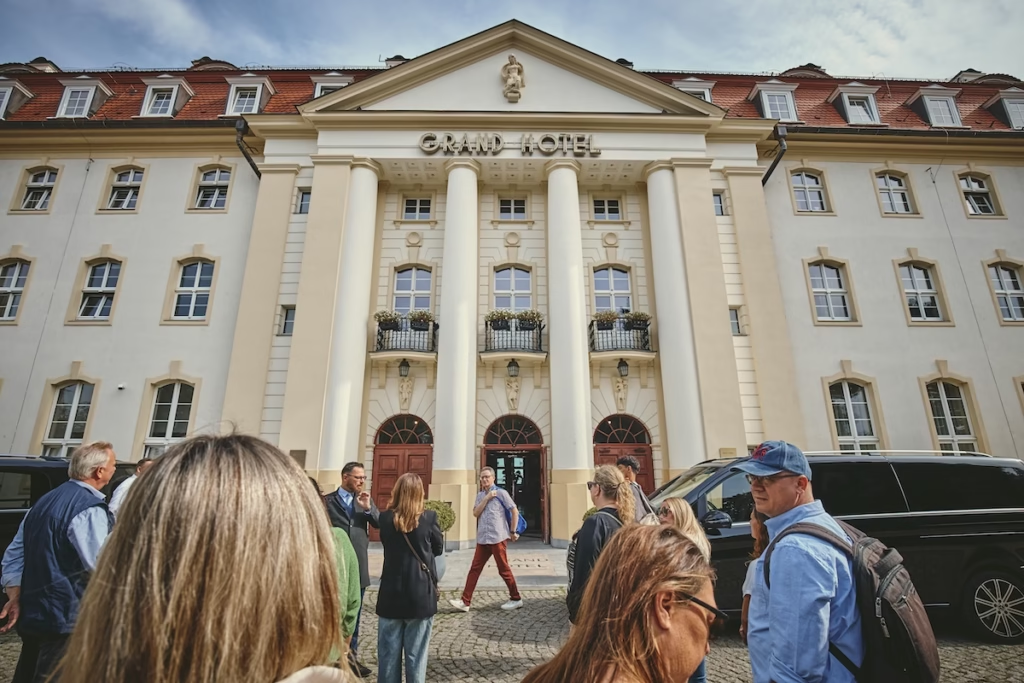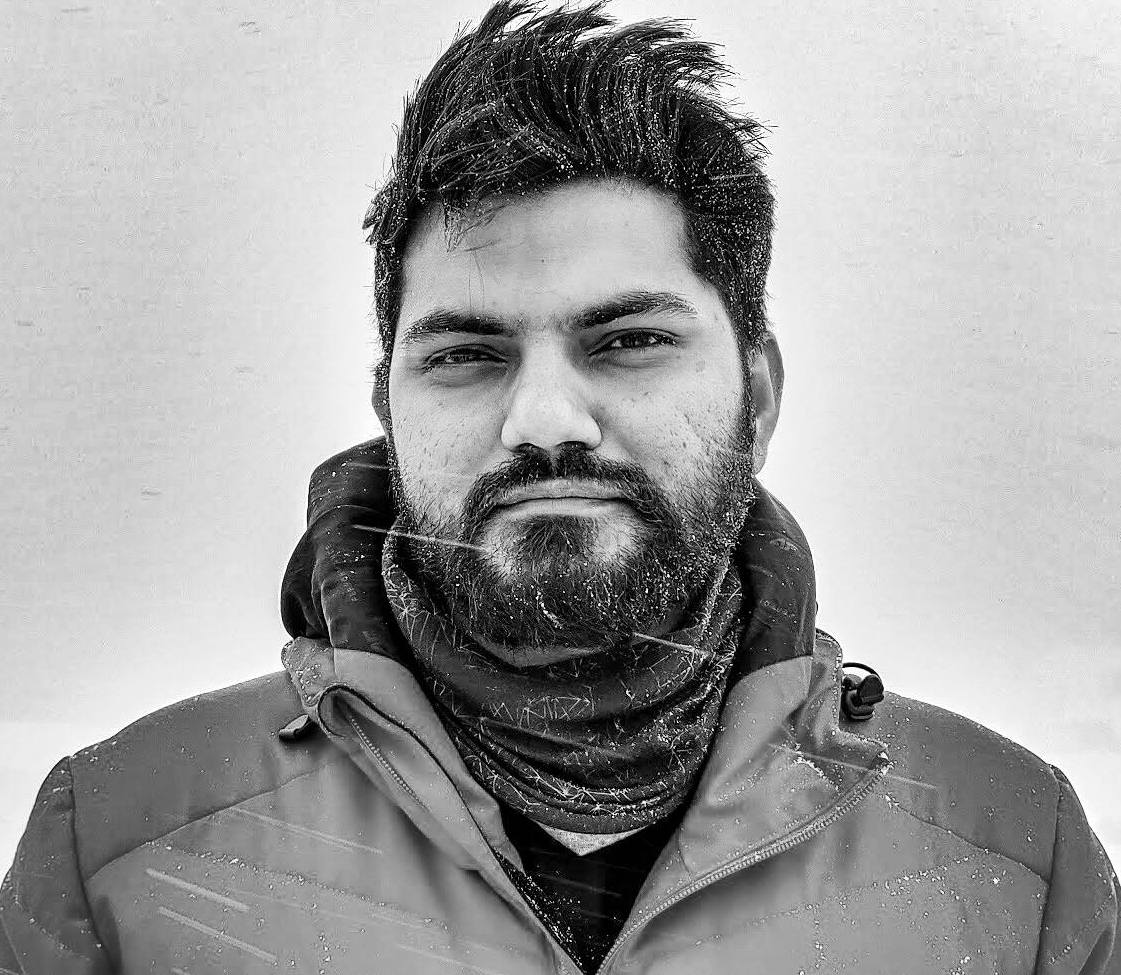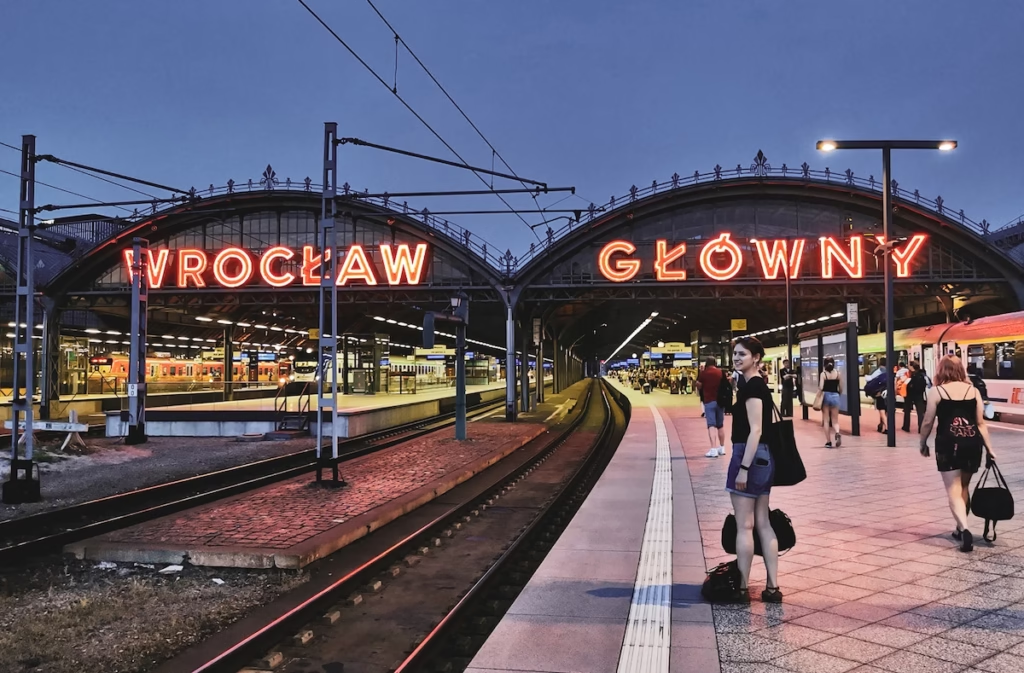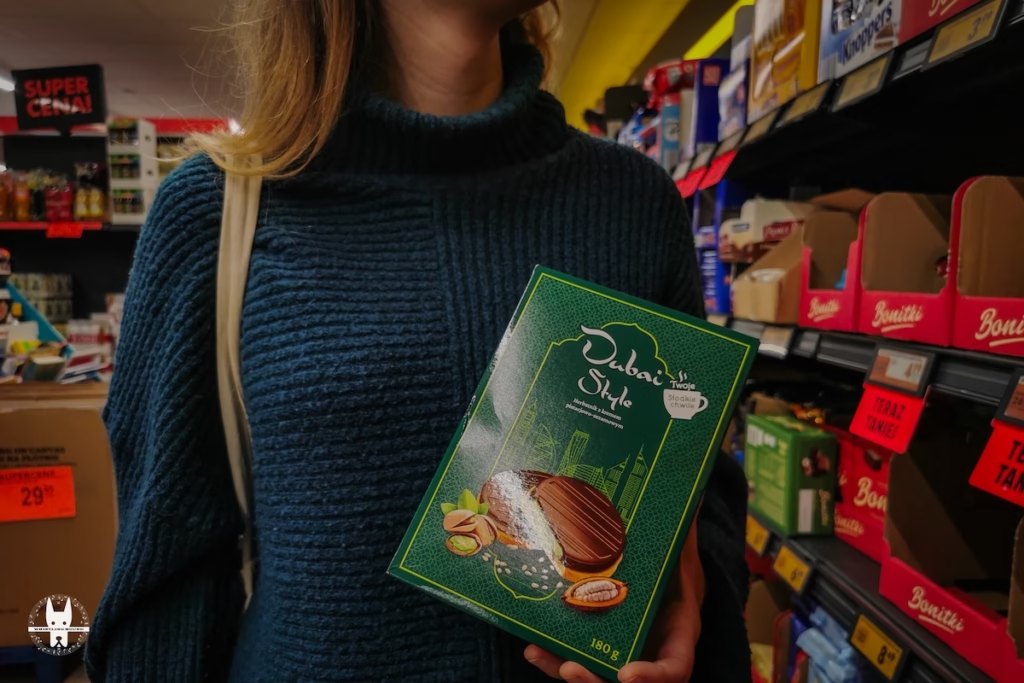Blending soulful local design with cutting-edge technology and experiences that feel handcrafted for the discerning traveller, the Polish hotel industry has burst onto the global scene. Recent industry updates, hospitality conferences, and on-ground observations over the last three to four years all point towards a defining moment. The current Hotel trends in Poland 2025 stand at a fascinating crossroads. Poland is now serving a global audience through world-class amenities and local storytelling.
A large part of today’s hospitality trends has been shaped by a maturing travel culture, a conscious approach to luxury, and a renewed faith in design. Hotels in Poland are becoming more intentional, local, and lived-in. While the global luxury market still chases grandeur, Polish hospitality has evolved into a search for identity. Hoteliers are focused, more than ever, on storytelling rooted in place, community, and craft.
From Kraków’s heritage conversions to Wrocław’s boutique revivals and Gdańsk’s coastal retreats, Polish hotels are not just following trends, they’re setting them. Every property aims to feel personal yet polished, digital yet human. Designed for travellers who value comfort, connection, and cultural truth in one breath, this is the new era defining the Polish hotel market in 2025.
Slow Luxury in Poland: The Power of Quiet Detail
Luxury in Poland has taken a softer form. Instead of marble lobbies and grand chandeliers, guests are gravitating towards tactile simplicity, handwoven linens, soft lighting, and personalised service. Some of the leading boutique hotels in Poland, like Art Hotel Wrocław, Hotel Stary Kraków, or Dwór Oliwski in Gdańsk, exemplify this new rhythm of rest. Booking.com’s 2025 European Insights reveal that travellers are prioritising emotional connection and design coherence over big star ratings. Call it a hotel trend with quiet confidence.
The conscious traveller of 2025 seeks slowness, appreciates hearty breakfasts, and a food menu prepared with seasonal local produce. Rooms that feel curated rather than decorated are appreciated more. This subtle shift defines “slow luxury” as the art of creating emotion through space, not opulence.
A fitting example, Art Hotel even offers guests a chance to take home a sample of their locally roasted coffee beans. The aroma and flavour of soulful mornings in Wrocław Old Town. Their pillow menu takes care and comfort to a whole new level, allowing guests at Art Hotel Wrocław the unique opportunity to choose their perfect comfort for a good night’s sleep.

Design with a Polish Accent
Polish hospitality trends 2025 signal a design awakening sweeping across the country. Hotels are moving away from global sameness and returning to the tactile language of Polish craftsmanship. From Silesian ceramics and Podhale woodwork to contemporary furniture, interiors now balance modern comfort with classic heritage. The result feels grounded, sensory, and unmistakably local.
This design-forward approach is part nostalgia, part national pride. It repositions Polish hospitality as a design conversation leader in Central Europe and appeals deeply to travellers seeking effortless authenticity. From handwoven tapestries on the walls to exposed wooden beams, hotels are bringing the royal Polish heritage quietly to life.
And what’s better than letting guests live that heritage in some of the top boutique hotels in Poland? PURO Kraków and Andel’s Łódź demonstrate how Polish-made furniture and ceramics can shape a luxury language that’s contemporary yet culturally anchored. Even global names like Nobu Warsaw are interpreting Polish materials and craftsmanship through an international lens. In this evolving design story, every room becomes a dialogue between the past and the present, between soul and structure.
Polish Sustainable Hospitality That Feels Real
Sustainable hotels in Poland are no longer chasing green labels; they’re proving their values through quiet, consistent action. From rooftop gardens and zero-waste kitchens to locally woven linen and solar-powered mountain lodges, the focus has shifted toward creating a living, circular ecosystem.
Brands like PURO Hotels, B&B Hotels, and smaller heritage conversions are leading by example, reducing emissions, tightening regional supply chains, and prioritising low-impact design. More than just a marketing slogan, sustainability is a mindset. Arche Hotel Krakowska in Warsaw, housed inside a restored brewery, with its reclaimed-brick interiors, and Mövenpick Grand Hotel Wroclaw, located in a heritage building, showcase how adaptive reuse is fast becoming Poland’s most sustainable design language.
Guests now sense it in every detail. From the breakfast plate to the building’s carbon footprint, top eco hotels in Poland have redefined themselves.
In 2025, sustainability in Polish hotels is no longer an act of compliance but more of a cultural insignia. The conversation has evolved from certificates to circular design. From PURO’s zero-waste kitchens to solar integration at Hotel Bania Thermal & Ski in Podhale, the hospitality industry is setting the benchmark. As Poland aligns with the EU’s 2030 climate roadmap, hotels that lead with local sourcing, renewable energy, and meaningful waste reduction will prove instrumental in shaping the country’s hospitality identity itself.

What the Actual Data Shows? A Market Snapshot of 2025 Polish Hotel Landscape
Poland’s hospitality sector is narrating a confident comeback. GUS data confirms that the country welcomed 38.8 million tourists in 2024, accounting for 97.6 million overnight stays. It’s a solid indicator of a market that has drastically recovered and matured post-pandemic.
The real movement, however, lies beneath the surface. Boutique and design-led properties have grown by 8.4 percent year-on-year, reflecting travellers’ tilt toward smaller, experience-driven hotels. Sustainability, too, has evolved from marketing promise to measurable practice, with eco certifications rising 32 percent across Polish hotels.
Perhaps the most defining insight of all: hybrid leisure-business travel now drives roughly 40 percent of urban hotel bookings, according to STR Global. For hoteliers, this confirms what the last two years hinted at — flexibility is no longer a perk, it’s policy.
Tech-Driven Comfort, Human-Led Service
Smart-room automation, contactless check-ins, and AI concierge tools have become standard across new and refurbished hotels in Poland. Yet the winners blend innovation with personal warmth. PURO Hotels Poland, for example, pairs tablet-based room controls and digital keys with local art, curated scents, and deliberate service rituals. Such facilities make technology feel like a discreet assistant rather than the point of arrival.
According to STR Global’s 2024 performance review, Poland’s urban hotels saw 10–12% improvements in operational efficiency from automation. Crucially, guest-satisfaction scores remain highest where tech supports, rather than replaces, human interaction. NYX Hotel Warsaw embodies this balance, a tech-forward property that still pulses with street-art energy and personal touch.
This is one of the defining hotel trends in Poland 2025: technology as a silent enabler of comfort, shaped by the irreplaceable warmth of Polish hospitality.
Tech does the timing; people do the remembering.
Bleisure in Poland & Hybrid Stay Culture
Remote work here is to stay, and Polish hotels are redesigning spaces that serve both laptops and leisure. Lobbies double as co-working lounges; weekday packages extend into restorative weekends. Andel’s Łódź, The Bridge Wrocław MGallery, and PURO Poznań exemplify the shift with flexible-stay programs that include ergonomic work pods, reliable high-speed connectivity, and on-site wellness options.
STR Global (2024) reports that roughly 40% of urban bookings in Poland combine business and leisure intent. It’s a decisive signal to rethink room types, food-and-beverage offers, and weekday occupancy strategies. The modern traveller wants both purpose and pause in a single itinerary; successful boutique hotels in Poland deliver both without compromise.

Experiential Polish Hospitality
Travellers now want stories they can join, not just rooms they can book. Boutique properties are curating small-group moments that truly immerse guests in Polish culture. Pierogi-making masterclasses in Kraków, late-night folk-music evenings in Podhale, and guided photo walks through Stocznia Gdańska (Gdańsk shipyards) end with a local brewer pouring amber beer and talking trade routes. These aren’t mere add-ons; they are the product.
Hotel Quadrille in Gdynia, a Relais & Châteaux property listed in the MICHELIN Guide Poland, exemplifies this narrative-led approach. Literary-themed interiors, storytelling menus, and art-driven events echo the city’s creative rhythm, giving guests something to retell long after checkout.
Up in Podhale, Hotel Bania Thermal & Ski continues to lead Poland’s wellness storytelling, where alpine views meet geothermal comfort. Here, leisure flows seamlessly into lifestyle. Even urban cultural venues like Królikarnia Wrocław are collaborating with boutique hotels for music residencies and curated stays. Blending the city’s artistic pulse with hospitality!
Secondary Polish Cities, Boutique Boom
Beyond Warsaw, Wrocław, and Kraków, smaller Polish cities are stepping into the design spotlight. Toruń, Lublin, and Białystok now host a wave of independent hotels converting townhouses into craft-led retreats. For guests, the appeal is simple: fewer crowds, clearer local stories, and rooms that feel like personal invitations.
Government statistics show this is real: GUS reports that in 2024, these secondary destinations contributed materially to a national uptick. Poland recorded 38.8 million tourists and 97.6 million overnight stays that year. Many of those nights migrated to smaller, design-forward destinations. Mid-scale boutique conversions tied to regional storytelling are now a low-friction path to differentiated occupancy. Kamienica 22 in Gdańsk and Hotel Altus Poznań capture this quiet renaissance. Even smaller cities in Poland now deliver design and depth, which was once reserved for capitals.
Design Partnerships as Brand Equity
In 2025, partnership with local makers isn’t decorative, it’s strategic brand equity. Polish upholstery and furniture houses like Comforty, design brands such as Tre (Tre Product), and textile studios like Tartaruga are moving beyond showroom placements into full-throttle hotel collaborations. Bespoke sofas in the lobby, signature kilims in suites, and tableware doubles as retail for guests to take home. These tie-ins create a visible, tactile Polish aesthetic. Guests leave the accommodation with a story and a product, while hotels gain a compact retail revenue stream and a design language that resists global sameness. A brilliant way to sell craft-as-ROI, with an aesthetic that pays.

Sustainability That Measures Up
The next competitive edge lies in data-driven sustainability. Luxury hotels in Poland are now publishing energy use, food-miles data, and waste-reduction KPIs in their ESG reports. PURO’s 2024 ESG Report, for example, documents a 27 percent cut in emissions since 2021. Hotel Bania Thermal & Ski introduced a closed-loop grey-water system in 2023.
Transparency is making all the difference in 2025.
To summarise, Poland’s hotel evolution in 2025 is quietly radical. This is where design meets sincerity, and where every stay begins to feel like a story worth retelling. I am here for it!
– Written by Amit Chandra, tourism professional and founder of Whistling Hound — curating experiences across Poland since 2017
Image courtesy: Poland Convention Bureau
Hotel Trends in Poland 2025 FAQs
Q1. What defines slow luxury in Poland 2025?
It’s a shift from showy opulence to intimate, handcrafted comfort like local linens, quiet service, and minimal design.
Q2. Which Polish hotels lead in sustainability?
PURO Hotels and Hotel Bania Thermal & Ski are setting a trend by publishing measured ESG outcomes, from zero-waste kitchens to renewable energy integration.
Q3. Are Polish boutique hotels growing outside major cities?
Yes. Wrocław, Toruń, Lublin and Białystok recorded 15 per cent growth in overnight stays in 2024 (GUS), driven by domestic travel and regional design.
Q4. How is technology reshaping Polish hotels?
Automation simplifies operations, but brands winning guest loyalty are those using tech to amplify Polish warmth and personal service.
Q5. What makes Polish hotel design unique today?
A fusion of craft and modern form—local wood, ceramics and contemporary furniture creating a distinct Polish aesthetic.
Further read: Spotlight on Poland 2025: Shaping the Future of MICE Tourism on the Polish Baltic Coast
Share this:
- Click to share on Facebook (Opens in new window) Facebook
- Click to share on LinkedIn (Opens in new window) LinkedIn
- Click to share on Reddit (Opens in new window) Reddit
- Click to share on X (Opens in new window) X
- Click to share on WhatsApp (Opens in new window) WhatsApp
- Click to email a link to a friend (Opens in new window) Email





